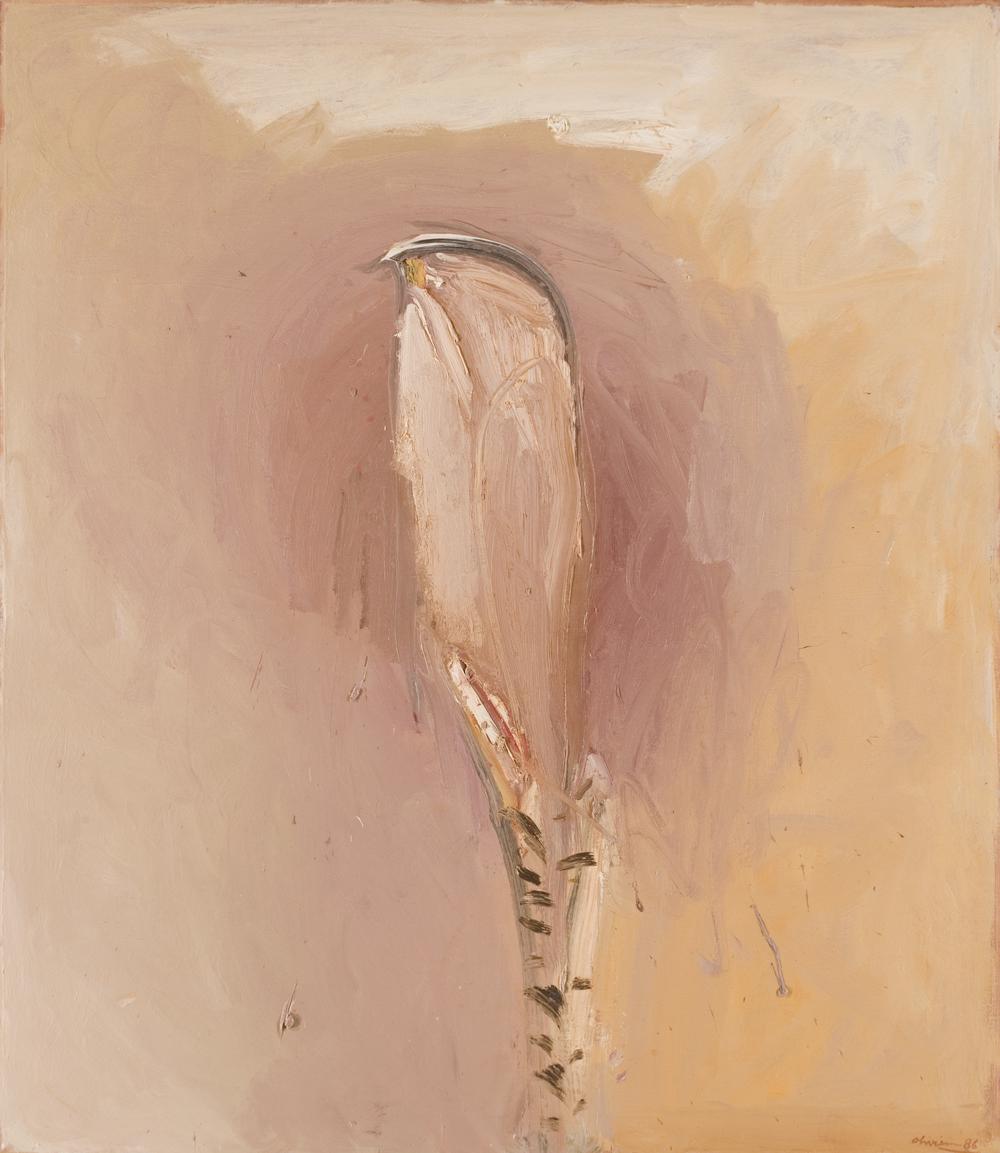Nathan Oliveira. Bird Watching
Nathan Oliveira was a keen observer of birds. The hawks and falcons that soared above the foothills near Stanford’s campus captured the artist’s imagination. When one of Oliveira’s students gave him a stuffed kestrel discarded from the Stanfords ornithological collection, the artist began using it as a model, creating realistic studies in watercolor, gouache, and oil.1 He collected feathers and various species of taxidermied birds. At one point, a nest of kestrels inhabited a neighboring studio at Stanford; “One day,” described Oliveira, “while at the easel, I noticed something fly down past my shoulder and sit on the floor. It was a small kestrel, which had entered my space through an opening in the studio wall. It was exhausted, and there I stood, eyeball to eyeball, with this magnificent creature.”2 Beginning in 1970, Oliveira became preoccupied with raptors as a subject matter. By the 1980s, he produced increasingly abstract images of wings, which culminated in the “Windhover” paintings—a series of large-scale meditative abstractions on flight made in the 1980s and 90s.3
Hilarie Faberman, Nathan Oliveira: “The Windhover”: Recent Wing Paintings and Related Works (Stanford, CA: Stanford University, 1995), 2. ↩︎
Nathan Oliveira, in Peter Selz, Nathan Oliveira (Berkeley: University of California Press, 2002), 98. ↩︎
The Windhover Project: The Wings of Nathan Oliveira’s Mind, San Francisco Museum of Modern Art, video, 4:41 minutes, available at sfmoma.org/watch/the-windhover-project-the-wings-of-nathan-oliveiras-mind/. ↩︎
